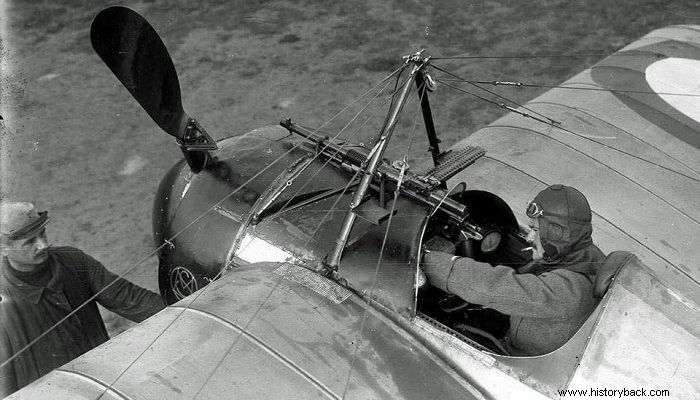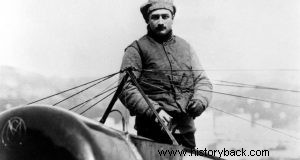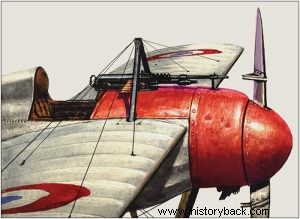
The French pilot Roland Garros was one of the pioneering pilots in the history of aviation. He was born in 1888. From an early age he was involved in airplanes. He made his first flight in 1909 and in the period until the start of the First World War, he participated in various air shows and competitions, breaking the record of flight height of the time, flying at a height of 5,600m
When the war broke out he enlisted in the French Air Force. Together with his engineer and operator friend Evgenios Zilber, he looked early on for the solution to the aircraft equipment problem. At the beginning of 1915, with the collaboration of Robert Moran, Garros found a dangerous solution. In a mid-wing Moran Saulnier N monoplane he mounted, in the nose, a machine gun, which he fired straight ahead.
On the propeller, at the height of impact of the machine gun bullets with it, steel tiles - reflectors - were placed. Machine gun rounds that hit the propeller would be reflected in the reflectors and cause no damage. Of course, this was by no means certain since no one could calculate the angle at which the falling fireballs would disperse.
However, the risk was less than it initially appeared. Aircraft propellers of the time were two-bladed. So, based on her rotations per minute, the chances of either of her blades being in front of the machine gun at the time of firing were relatively small, as long as the operator was limited to firing short bursts.
After the relevant tests were completed, Garros flew, on April 1, 1915, his first combat mission with his machine-gun-armed chaser - the first in history. Garros soon spotted a German two-seat reconnaissance against which he charged. The Germans were not particularly alarmed at the sight of the lonely Moran.
But suddenly they heard with horror the rattling of the Hotchkiss machine gun of the French aircraft and felt its fireballs tear the air. In no time the German aircraft had turned into a fiery mass which was plummeting to the ground. Garros repeated his success within the following days. On April 19, however, he was forced to make a forced landing on the German lines.
Garos managed to escape from a German POW camp in 1918. He rejoined the French Air Force, achieving another downing on 2 October 1918. But three days later he was shot down and killed. Thus one of the pioneers of aviation was lost.


